Phyllo pastries need expertise and a firm hand so they’ll never fall into the easy sweet recipes category, but they are worth savoring and this instalment goes beyond Turkey
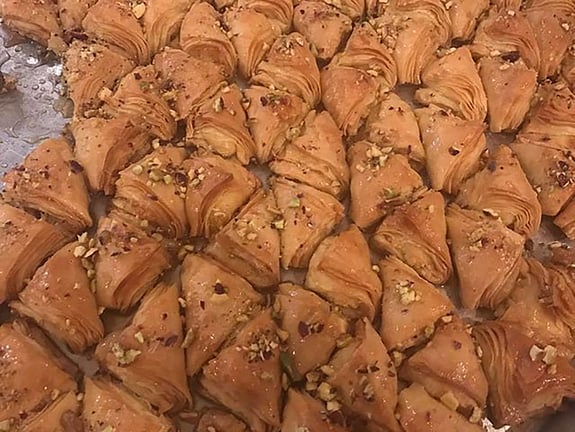
If you look up healthy sweet recipes with phyllo pastry, you won't find these Middle Eastern desserts among them, and neither do they fall under easy sweet recipes. Then why are we writing about it? Because using the delicate phyllo dough is an art that originated in Turkey and diffused to its neighbors who have given their twists to beloved classics like baklava. This instalment of phyllo dough pastries covers Jordan, Lebanon, Libya, North Macedonia and Morocco.
1. Warbat
This does not refer to Godzilla’s dragon-snake monster, but Jordan’s unique take on the Middle Eastern dessert, baklava. It is made with delicately thin layers of phyllo dough which traps a delicious semolina custard and is traditionally triangular in shape. It is baked until it's a beautiful golden hue and then soaked in a bath of sugar syrup that has a squeeze of lemon juice, and it’s then topped with chopped nuts or cheese. It is called warbat bi-qishteh or warbat be gishta, when it is served with cream. While its origin might be from Jordan, it is found throughout the Middle East and associated with Ramadan.
2. Bukaj baklava
The name is derived from the Arabic "bukjah", which loosely translates to fabric parcel and these baklavas are made from phyllo dough pastry, that resembles an open-top pyramid. A better description would be a just blossoming flower bud, which is why maybe the West, basically the United States, calls this Lebanese baklava, bird’s nest baklava. This sweet treat features phyllo sheets folded into rectangular shapes and filled with chopped nuts, usually pistachios or a mix of pine nuts and cashews. The corners of the dough are then artfully folded to create parcel-like shapes, followed by being drenched in butter and sugar syrup.
3. Asawer
The name "asawer" translates to "bracelet," an apt description for this ring-shaped phyllo pastry from Lebanon, which is a cousin to the Asabi. It is expertly crafted and shaped into a ring to resemble a bracelet. It usually has a nutty filling and is crunchy, light and small in size, making it a perfect treat for the calorie-conscious. Skilled hands roll the phyllo dough into small rounds, deftly scattering ground nuts, usually pistachios, between the layers as they work. Once baked, the bunch of Asawer are bathed in a rose-flavored sugar syrup. The finishing touch is the nutty centre – which uses finely or coarsely chopped nuts – pistachios, cashews, or pine nuts.
4. Znoud el sit
The name "znoud el sit" translates intriguingly to "lady's upper arms," a playful reference to the pastry's shape. While the origin of this moniker remains a mystery, the treat itself has found a home across Lebanon, Syria, and Iraq, with each country adding subtle differences to the recipe. Znoud el sit, graces Middle Eastern tables, particularly, during Ramadan's Iftar meals. This delicacy is made with thin phyllo sheets wrapped into elongated rolls, cradling a filling of ashta – a Levantine clotted cream. The rolls are deep-fried in hot oil, making them golden and crisp and then soaked in a thick syrup infused with orange blossom and rose water, a final sprinkle of ground pistachios adds the finishing touch.
5. Asabi
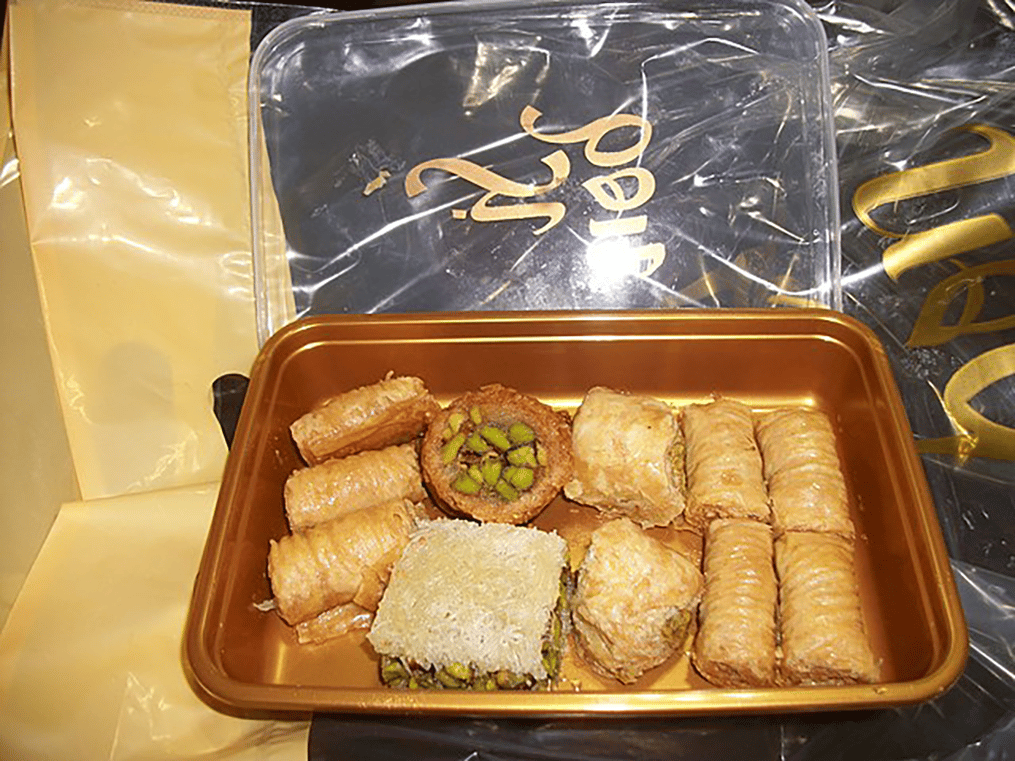
The pastry's elongated form has earned it the charming nickname "finger baklava" – a literal description of this sweet pastry. Asabi is a member of the baklava family and from Lebanon, where the thin phyllo sheets are filled with walnuts, though modern interpretations might surprise with an array of chopped or ground nuts. The phyllo-nut combination is deftly rolled and sliced to the baker's preference before being introduced to the oven's heat. Post-baking, these golden morsels receive a generous dousing of syrup, which might carry notes of lemon, rosewater, or orange blossom water, depending on the maker's whim.
6. Bakalawa bil jibna
Libya puts a unique spin on classic baklava, where the traditional nut filling is swapped for a blend of cream cheese and muhallabia (Middle Eastern desserts that is a milk pudding) made with sugar, cornflour, milk, qashta cream and rosewater. This baklava is called the bakalawa bil jibna, which after preparation, is soaked in a syrup featuring honey, lemon, and rosewater. Its lighter flavor profile makes it a Ramadan favorite, though it requires patience — a six-hour rest period is recommended before serving.
7. Jawhara
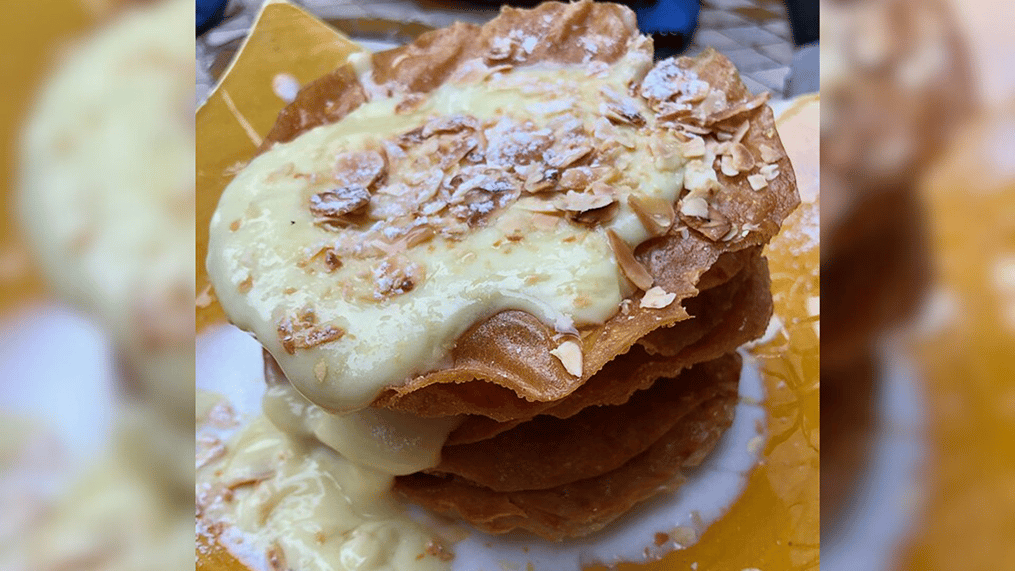
Morocco brings the world Jawhara, also known as ktefa or milk pastilla which is one the most impeccable Middle Eastern desserts, out there. This sweet phyllo pastry dessert uses the delicate warqa pastry, that is fried till golden brown and multiple layers are then sandwiched with an almond and sugar filling. The whole thing is served with a custard infused with orange blossom water, that is poured over the entire creation. With five to six layers and various garnishes, Jawhara has crossed borders and is popular in France as pastilla au lait.
8. Maznik
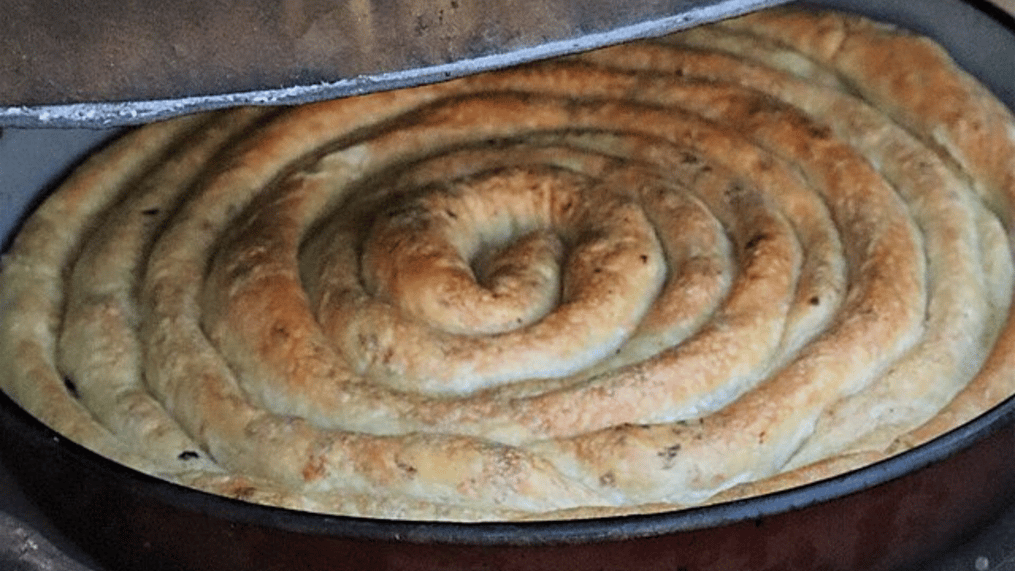
From the heart of North Macedonia, comes a sweet pastry called Maznik, with its distinctive coiled shape that comes in both sweet and savory versions. It is made with phyllo dough that is hand-stretched and pulled until paper-thin, in which nestles grated apples or pumpkin. The whole thing is then coiled into a spiral, brushed with water and oil and then baked. Maznik is usually prepared during special occasions and in some regions, it’s specially made to hide a lucky coin within its coils for the religious holiday called Vasilica, called vasilicharski maznik.
9. Bundevara
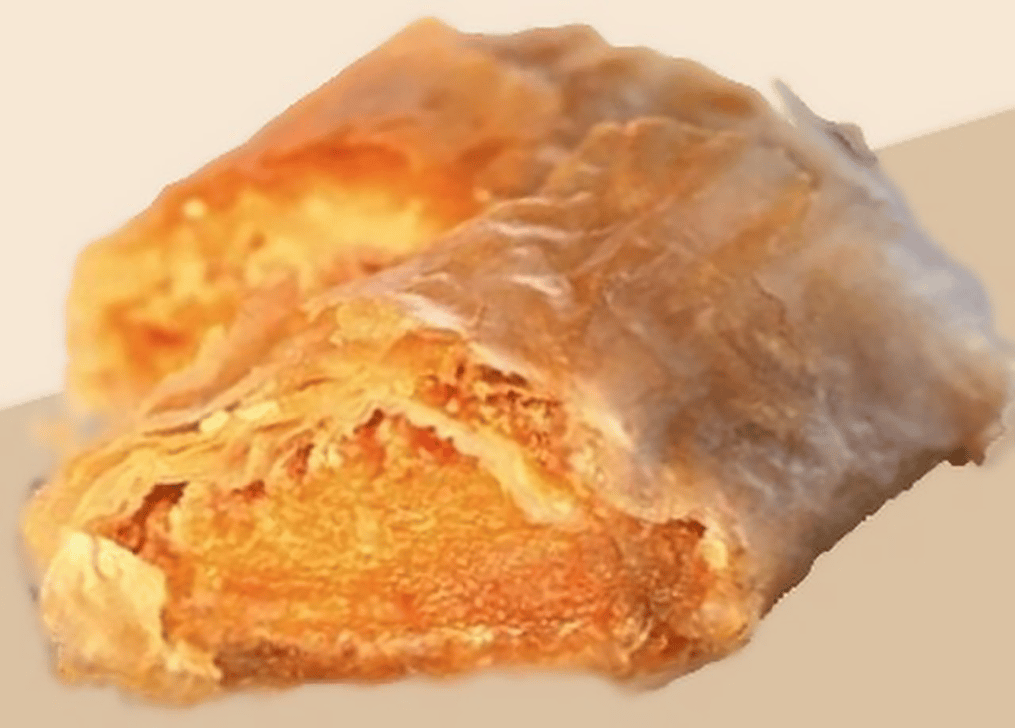
When autumn approaches Serbia, local kitchens bake the delicious bundevara, which is the local pumpkin pie made with phyllo dough. The filling is made with grated pumpkin mixed with sugar and spices, mostly cinnamon and nutmeg, that nestle between the sheets of pastry, some even sneak raisins into this pie. It is ideally served steaming hot, straight from the oven, as the aroma of spices fills the air. If one likes deeper flavors, it is best enjoyed at room temperature.
Like This Article?
More Like This




Popular Articles





Trending Web Stories
Curated Recipes


















